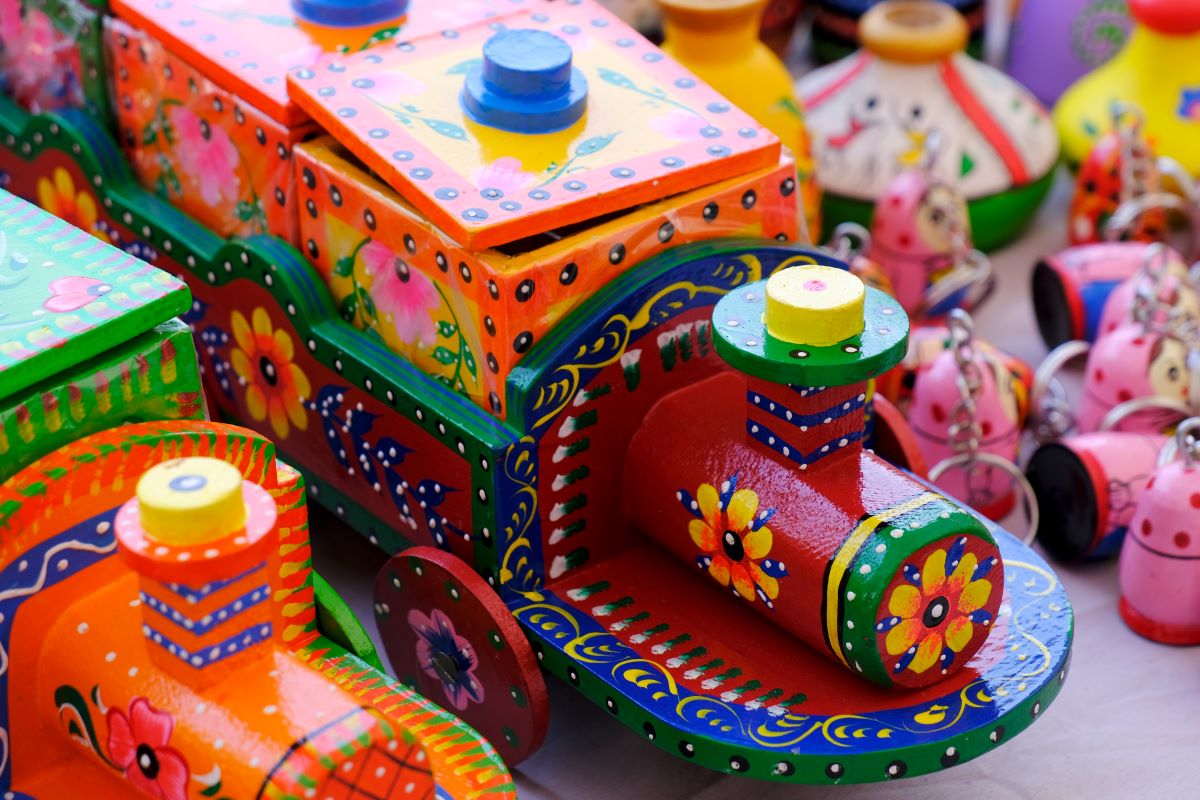The Indian toy industry is one of the biggest beneficiaries of the “Make in India” campaign and the country is about to push it even further. On Monday, India announced the launch of a 100-acre Toy Park in Noida, close to New Delhi. This toy park will house several industrial units for the manufacturing and export of toys, including high-quality electronic toys, playground equipment, soft toys, slides, plastic toys, wooden toys, and board games.
This push towards local toy production has empowered India to reduce its dependence on toy imports from China. According to the Trade Promotion Council of India, total toy imports saw a significant decline from $257.65 mn during the fiscal year 2013-14 to $62.39 mn in the fiscal year 2022-23, a 75% decrease. At the same time, toy exports saw a surge from $36.91 mn in 2013-14 to $153.88 mn in 2022-23. Especially the import of dolls, scooters, pedal cars, and wheeled toys has declined. At the same time, exports of playing cards, video game consoles, and parlour games surged by 105.8% in the same period.
According to the Micro, Small & Medium Enterprises (MSME) Minister Narayan Rane, 9600+ registered MSME units are actively reshaping the country into a vibrant toy production hub.
India moves away from Chinese imported toys
Government policies have been one of the biggest driving forces for the Indian toy industry. There are also plans to include toys in the list of industries eligible for the government’s production-linked Incentive (PLI) scheme. This scheme with an allocation of about $23.70 bn offers incentives to labour-intensive industries over five years based on its incremental sales.
According to a study by KPMG-FICCI, one of the biggest advantages of India is the lower cost of labour. India’s cost of labour per hour is $1.7 compared to China’s cost of $5.8. This gives a competitive edge to India’s plastic and plush toys. Its logistics efficiency is also better than that of China, as per the study.
Concerning China’s plastic toy market, KPMG said, “Capturing even 5% of this through focused policy steps could go a long way in helping India’s exports meet the half-billion mark.” KPMG also projects the Indian toy industry to grow to $2 bn by 2024-25 out of which 40% will be contributed by domestic production. This is a massive growth when compared to the 15% domestic production in 2019-2020.
Another big reason for the decline in toy imports from China is the low-quality standards. India’s government has also issued a Toys (Quality Control) Order in 2020 to ensure that the imported toys match the Indian standards for the safety of toys and bear the standard mark (ISI mark) under license from the National Standards Body. However, several toys from China failed this test.
Moreover, the government has raised the import duty on toys from 60% to 70% in the 2023-24 budget, to boost local manufacturing of these products.
Will India overtake China in the global toy market?
China has been the world’s largest toy market exporting 59.2% of the total toy trade value in 2022, according to Statista. However, its toy exports are taking a hit due to a weak global economy, trade wars, and rising production costs. As a result, India is trying to compete and capture some key markets.
With a market size of about $18.9 bn, China’s toy market is nearly eighteen times that of India. The country also has more expertise in making electronic and mechatronic toys, where India is lagging currently.
However, with the government-imposed import restrictions, Indian toy makers will be compelled to boost their electronic toy production capabilities. India’s first toy manufacturing cluster at Koppal in the southern state of Karnataka spread over 400 acres, is already working towards this goal.
To gain an edge over China, India is focussing more on innovative toys that have strong roots in its culture. The country aims to carve a niche in sustainable and eco-friendly toys which have high demand, globally. Moreover, India is trying to create more end-to-end manufacturing clusters to compete with China.
Given the current numbers, India has a long way to go before it takes on China’s toy market at a global level. However, with India’s increasing focus on toy manufacturing at home, China is quickly losing an important export market.










 Australia
Australia China
China India
India Indonesia
Indonesia Japan
Japan Malaysia
Malaysia Philippines
Philippines Singapore
Singapore South Korea
South Korea Taiwan
Taiwan Thailand
Thailand Vietnam
Vietnam Germany
Germany Hong Kong
Hong Kong USA
USA Switzerland
Switzerland Singapore
Singapore
 United Kingdom
United Kingdom








